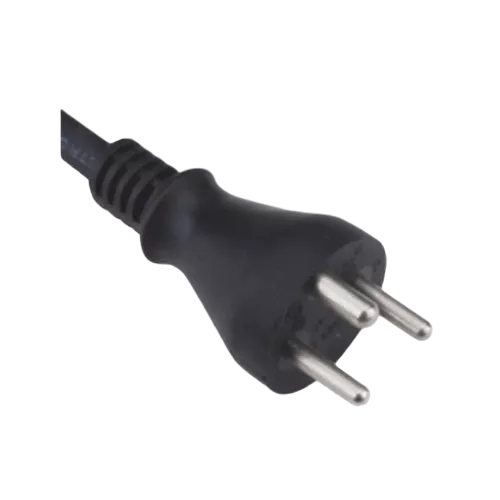Insulation Material: Indoor Cords: Indoor power cords typically utilize insulation materials such as polyvinyl chloride (PVC) or thermoplastic materials designed for basic protection. PVC insulation is adequate for indoor applications where the cord is shielded from environmental elements and where temperatures are relatively stable. However, this type of insulation may not provide sufficient protection against exposure to extreme temperatures or harsh environmental conditions. Over time, PVC can become brittle or degrade when subjected to prolonged use or exposure to certain chemicals and physical stress. Outdoor Cords: Outdoor power cords are engineered with advanced insulation materials designed to offer superior protection against environmental challenges. Common insulation materials for outdoor use include rubber compounds and thermoplastic elastomers (TPE). These materials provide excellent resistance to moisture, extreme temperatures, and UV radiation. Rubber insulation, for example, remains flexible and durable across a wide temperature range, maintaining its integrity and protective qualities even in harsh weather conditions. TPE offers enhanced flexibility and resistance to both low and high temperatures, making it suitable for outdoor applications where temperature extremes and exposure to the elements are common.
Construction and Durability: Indoor Cords: The construction of indoor power cords is generally designed for ease of use and flexibility within controlled environments. These cords are often lighter, with a thinner outer jacket and less robust internal construction. The focus is on providing a balance between flexibility and performance for typical indoor conditions where the risk of physical damage is lower. However, this construction may not withstand significant physical stress, such as abrasion or impact, which can compromise the cord's performance and safety over time. Outdoor Cords: In contrast, outdoor power cords are built with a more rugged construction to handle the demanding conditions of outdoor environments. They feature thicker, reinforced jackets and robust internal wiring designed to resist physical stressors such as impacts, abrasions, and entanglements. The outer jacket of an outdoor cord is often made from durable materials such as heavy-duty rubber or a highly resilient thermoplastic compound. This construction ensures that the cord can endure frequent use, rough handling, and exposure to various outdoor elements without compromising its safety or performance.
Water and Weather Resistance: Indoor Cords: Indoor power cords are not designed with water resistance or weatherproofing features. They are suitable for environments where exposure to moisture is minimal or nonexistent. Using indoor cords in damp or wet conditions can lead to safety hazards, including electrical shorts, shock hazards, and potential damage to the cord itself. Indoor cords may not have sealing mechanisms or protective coatings that prevent water ingress, making them unsuitable for any application where moisture exposure is a factor. Outdoor Cords: Outdoor power cords are specifically designed to handle exposure to water and varying weather conditions. These cords often feature water-resistant or waterproof jackets that prevent moisture from penetrating the internal wiring. Outdoor cords typically include sealed connectors and weatherproof designs that protect the electrical connections from rain, snow, and humidity. Some outdoor cords are rated for submersion in water, providing enhanced protection for applications in wet environments. The weather-resistant properties ensure that the cord maintains its electrical integrity and safety despite exposure to harsh weather conditions.
D3-16 South African/Danish standard power cord



 English
English عربى
عربى











